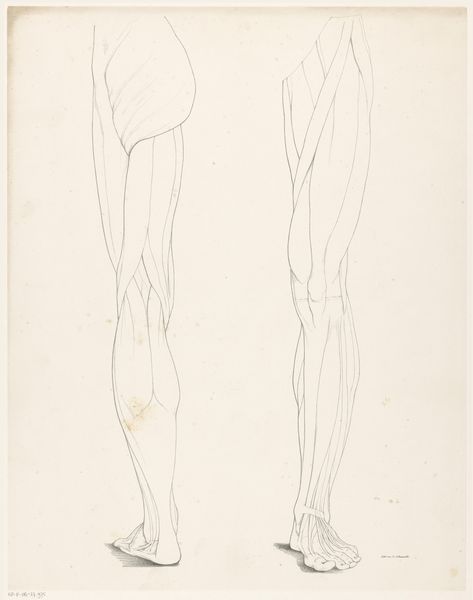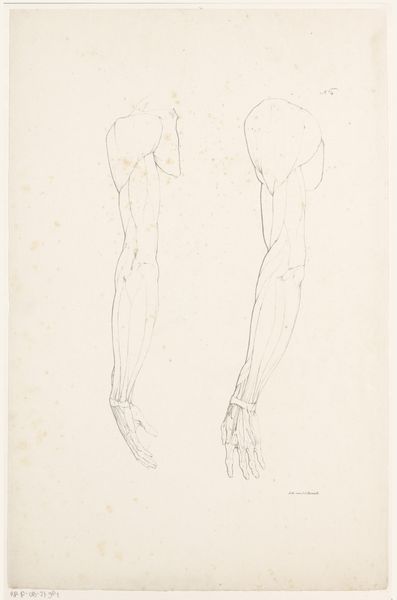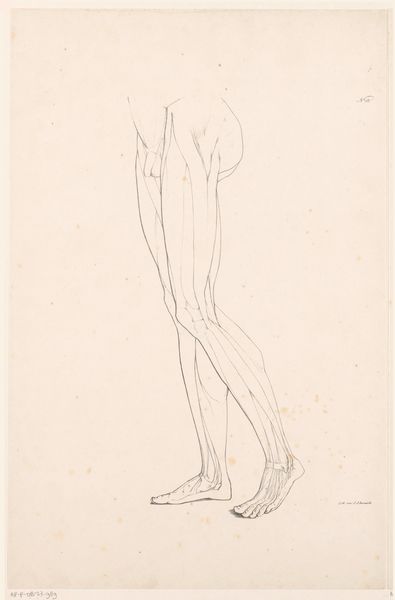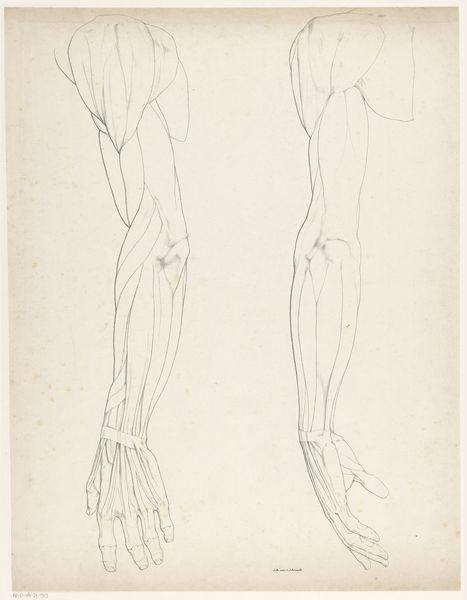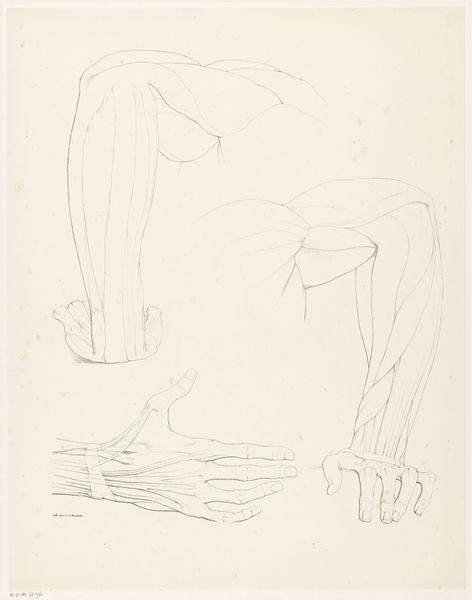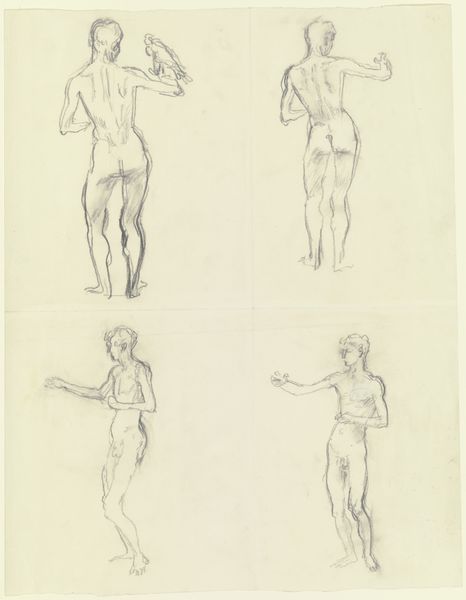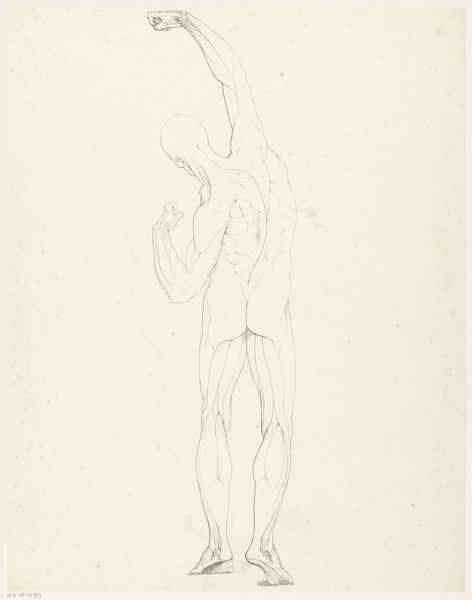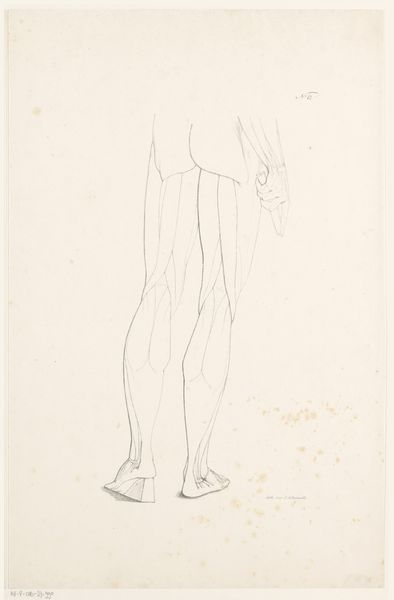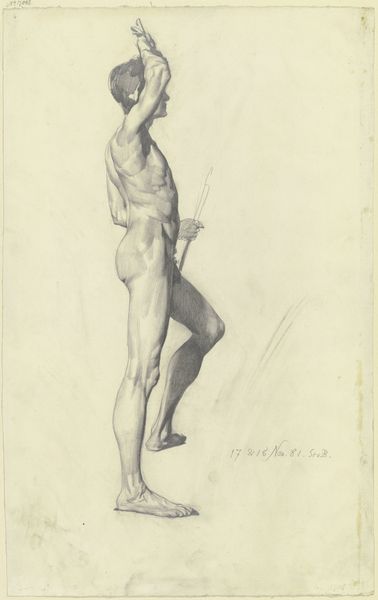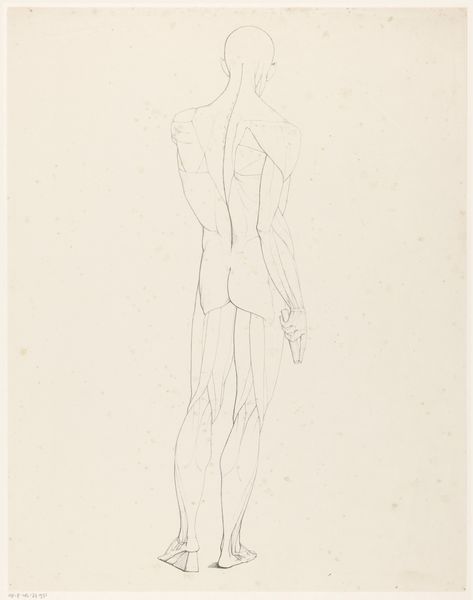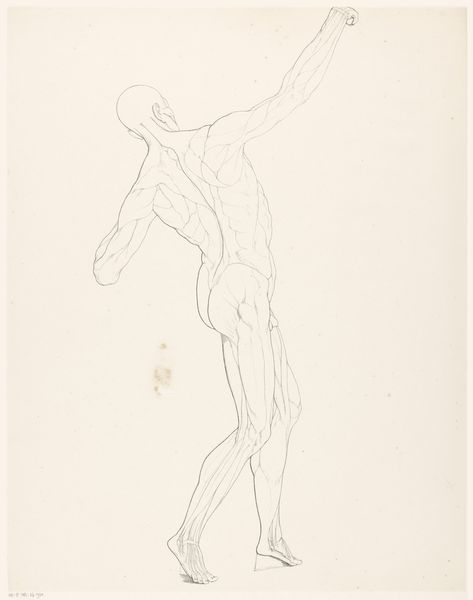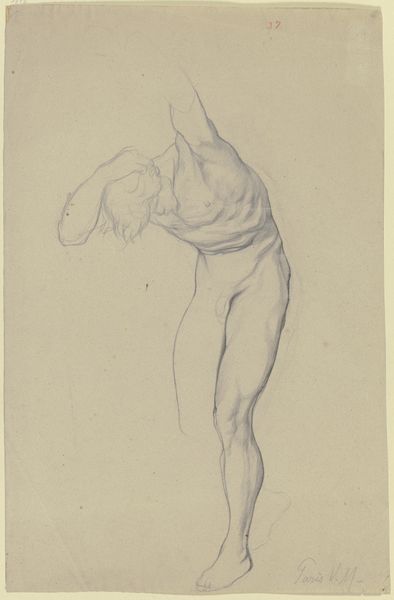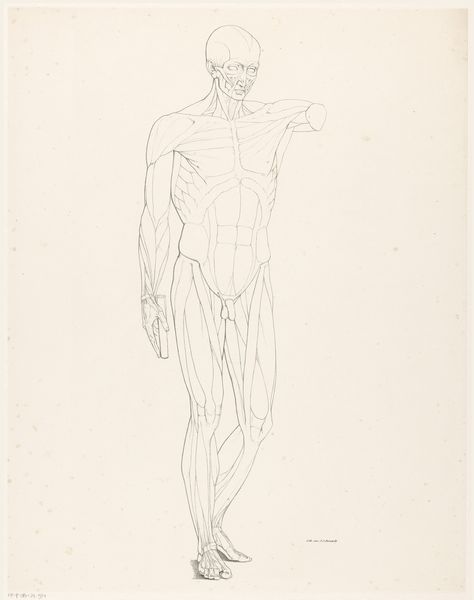
drawing, pencil, graphite
#
portrait
#
drawing
#
light pencil work
#
thin stroke sketch
#
pencil sketch
#
figuration
#
personal sketchbook
#
idea generation sketch
#
ink drawing experimentation
#
pen-ink sketch
#
pencil
#
graphite
#
sketchbook drawing
#
pencil work
#
history-painting
#
academic-art
#
realism
#
initial sketch
Dimensions: height 545 mm, width 400 mm
Copyright: Rijks Museum: Open Domain
Jean Augustin Daiwaille made this écorché study with pen and brush and grey ink in the early 19th century. These figures, flayed to reveal the underlying musculature, belong to a long tradition of anatomical study in the service of art. We can consider this drawing not just as an isolated demonstration of skill, but as part of an institutional history. In post-revolutionary France, and spreading across Europe, state-sponsored art academies played an increasingly important role. These drawings were produced as examples for students in these institutions. Through careful observation and meticulous rendering, Daiwaille demonstrates the importance of understanding human anatomy for artists striving to depict the human form accurately. But it also speaks to the values of the art academy and the role of this institution in shaping artistic production. By delving into the archives of the art academy and studying the treatises and manuals used in its curriculum, we can gain a richer understanding of the social conditions that shaped artistic training in 19th-century Europe.
Comments
No comments
Be the first to comment and join the conversation on the ultimate creative platform.
